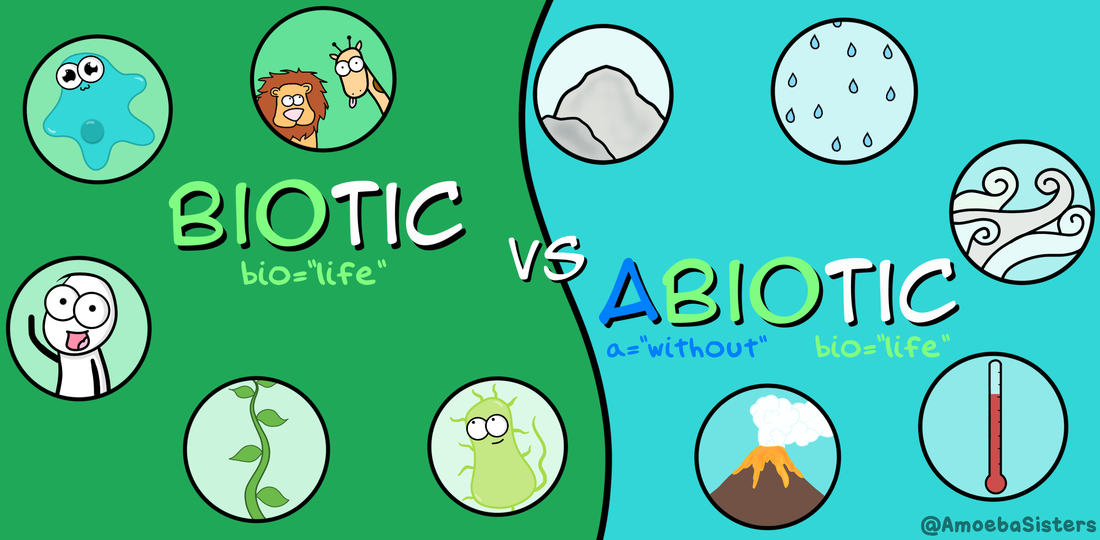Biotic and Abiotic Features (1/8-1/12)
 |
| http://www.amoebasisters.com/uploads/2/1/9/0/21902384/4930638_orig.png |
Summary:
Take a few minutes and go outside. The environment around you has many factors, both living and non-living. The world is full of many ecosystems including forests, deserts, and more. Ecosystems are the living and non-living things that make up an environment. There are many different ways that living and non-living factors in an ecosystem interact and work together.
The living factors of an ecosystem are called biotic. "Bio" means life. Some examples of biotic features include animals, plants, humans, bacteria, and more. Close your eyes and imagine that you are in a rainforest. Some examples of biotic features may include Jaguars, Orchids, Sloths, Trees, and more. The non-living factors of an ecosystem are called abiotic. "A" means without, and "bio" means life. Together, that means "without life." Some examples of abiotic features include weather, temperature, sunlight, and soil. This time lets imagine that we are in a desert. Some of the abiotic features in a desert include sunlight, temperature, and water availability (as there is not much available water in deserts.)
There are many ways that biotic and abiotic factors interact. One very simple example is when animals (such as elephants) drink water to survive. This is an interaction between living (elephant) and non-living (water.) Another example could be the interaction with sunlight, fish, and algae. With lots of sunlight, it helps algae grow faster, which is not good for the fish because it can decrease their access to oxygen. As you can see, there are so many interactions between the biotic and abiotic world.
SP6: Constructing Explanations and Designing Solutions
This week, we evaluated information from various websites and sources to form the hypothesis that biotic and abiotic features depend on each other to survive. We worked together as a team to gather evidence and construct a thoughtful explanation for each of the questions in our packet. This helped me understand more about the living and non-living factors of our world and how they impact humans and everything around us.
XCC: Cause and Effect
A cause and effect relationship that I observed this week in class is the relationship between the biotic and abiotic world. For example, having very little water available in deserts has caused cacti to store every drop of water to survive. Based on this relationship, a prediction that I can make is that the biotic and abiotic factors depend and affect each other in various different ways. This relationship helps me understand more about abiotic and biotic features and their relationships.
Multiplier
This week, I was a learner. I wanted to learn more about abiotic and biotic features and how this affects the environment that we live in. I learned a lot of information about the living and non-living world and its relationships. I learned more about this topic by completing various assignments and completing a packet. My table group shared ideas so that we would all understand the topic. I also read extra information so that I would understand more about the topic. This practice has helped me learn more and understand how to be a learner.
Comments
Post a Comment